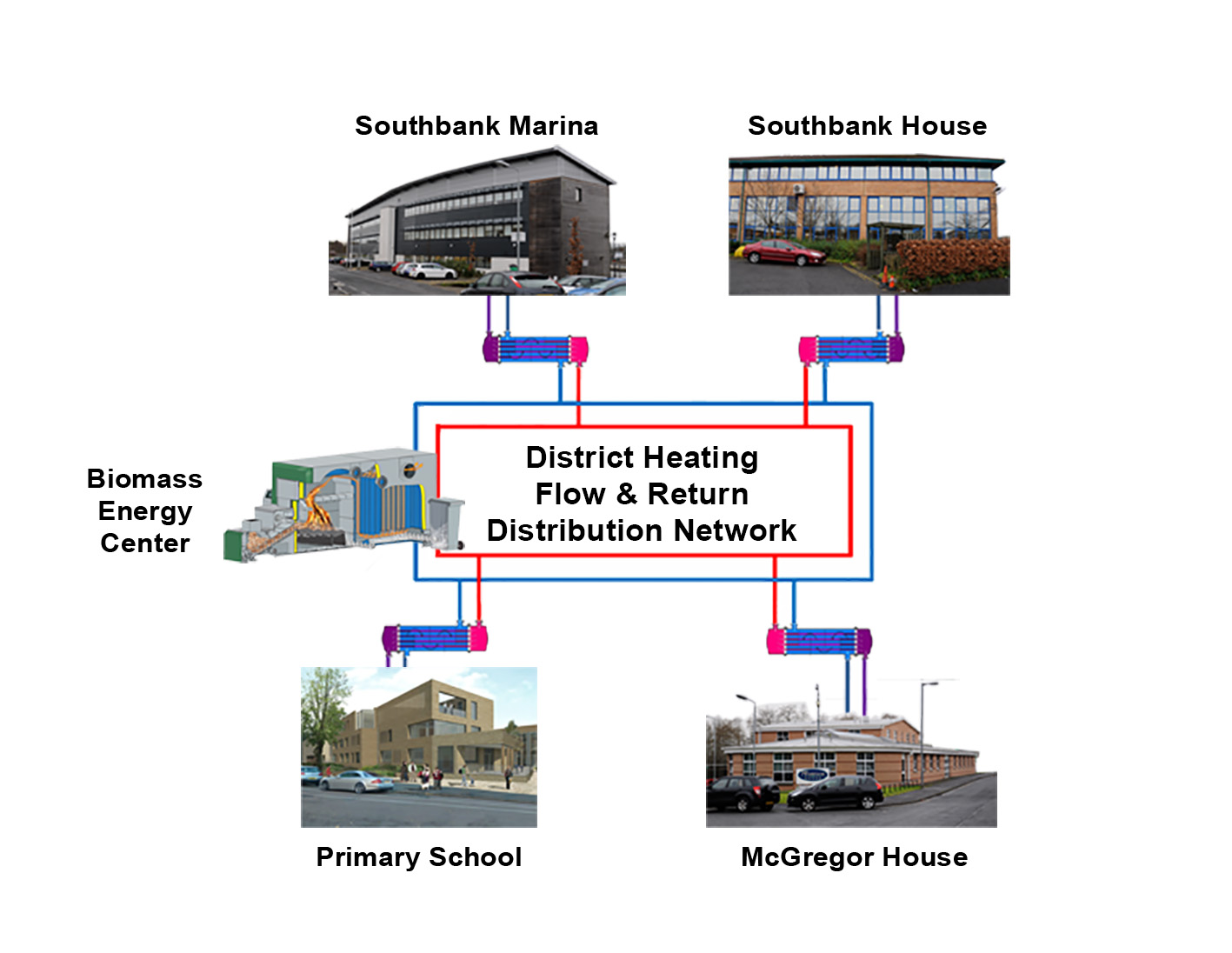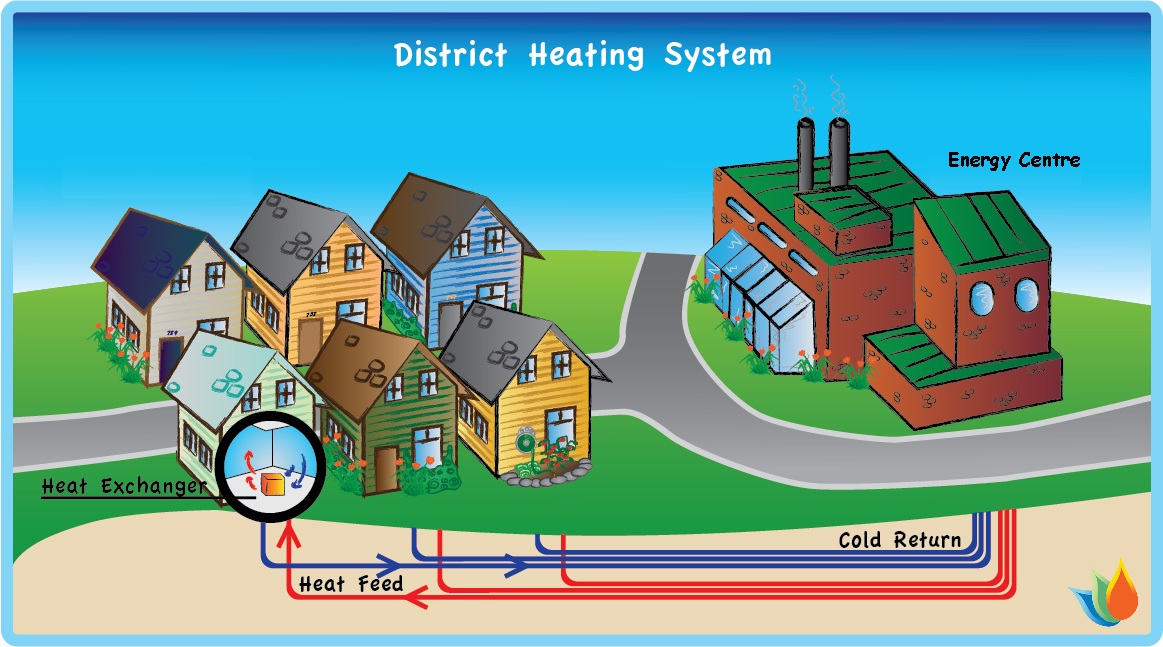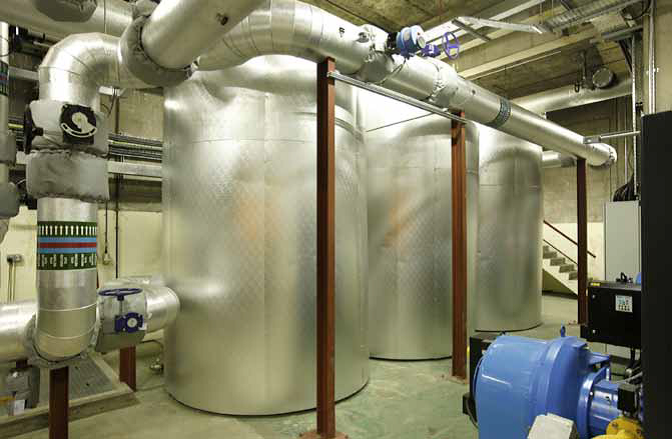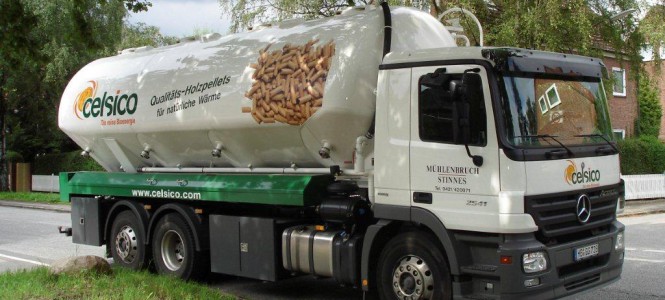Home
Welcome
Sustainability
Energy use in buildings accounts for almost 50% of all CO2 emissions within the UK, with over 40% of energy consumption in Scotland a result of HVAC operation. Heating is the biggest single reason we use energy in our society.

The European Union and its member states has historically been a leader in the design and adoption of stringent environmental policies. The EU has set itself comprehensive and demanding targets for curbing its greenhouse gas emissions and enhancing its security of energy supply. By 2020, EU member states have committed to; reducing greenhouse gas emissions by 20% (compared to 1990 levels), meeting 20% of energy demand via renewable energy technology and lowering their energy consumption by 20% through increased energy efficiency. Governmental policy at regional, national and European level is at this ideologies core. To add to this, the recent price hikes of the ‘Big 6’ UK energy firms have brought energy consumption to the fore-front of the consumers’ minds.
Biomass driven district heating (DH) is one form of emerging technology that may be one of the engineering concepts at the heart of reducing the severity of these issues.
Course
As a team of post-graduate students studying Sustainable Engineering, energy supply and demand is at the core of our academic focus. The course format has given us an opportunity to work in a multi-disciplined team to investigate an energy-related problem in collaboration with an industrial client.
Biomass DH
 Our project centres on biomass district heating. Biomass boiler technology is gaining popularity across the UK, on a domestic, commercial and industrial scale. This is partly due to the fact that it is a proven and reliable renewable energy technology, with governmental grants schemes and predicted future fuel costs enabling it to compete with conventional gas fired heating systems. This renewable technology also has added benefits to clients seeking higher BREEAM (Building Research Establishment Environmental Assessment Method) and EPC (Energy Performance certificate) ratings.
Our project centres on biomass district heating. Biomass boiler technology is gaining popularity across the UK, on a domestic, commercial and industrial scale. This is partly due to the fact that it is a proven and reliable renewable energy technology, with governmental grants schemes and predicted future fuel costs enabling it to compete with conventional gas fired heating systems. This renewable technology also has added benefits to clients seeking higher BREEAM (Building Research Establishment Environmental Assessment Method) and EPC (Energy Performance certificate) ratings.
| Electricity generation | kg CO2/MWh |
|---|---|
| Wind | 6.9-14.5 |
| Biomass | 15-49 |
| Natural gas | 369-398 |
| Space heating | |
| Biomass (woodchip) | 10-23 |
| Natural gas | 263-302 |
| Oil | 338-369 |
On the other hand, DH has fantastic potential yet extremely low heating market penetration within the UK. It currently accounts for approximately 1% of the UK’s heat supply for buildings.
Biomass powered DH has the capability to enhance future energy security, ensure a cleaner environment and compete financially with other renewable and non-renewable heating technologies. This must be assessed on a case-by-case basis.
References:
Electrical Contractors’ Association,
2005. Guide to Reducing Emissions through Energy Efficiency, London.
Fütterer,
M.A. et al., 2014. European energy policy and the potential impact of HTR and
nuclear cogeneration. Nuclear Engineering and Design, 271(0), pp.73–78.
Project Aim
Aim
To carry out a high-level and strategic review of the potential for biomass powered district heating.
Objectives
As a team, we formulated a general methodology, using numerous design tools, to determine the feasibility of biomass district heating for any given group of buildings. This was applied to a specific case study, in conjunction with a local council and engineering consultancy, to apply the theoretical approach to a real life scenario. A strategic review of the feasibility of the implementation of the technology on a town council was performed. From the adaptation of the general theory to the case study, general and site-specific recommendations for biomass district heating could be formulated.
The project objectives are as follows:
- To define a general methodology for biomass power district heating
- To carry out a technical analysis and system design of a case study location
- To consider the practicable extent and size of a district heating network
- To estimate of the financial feasibility of the project
Deliverables
The project set out with the aim of producing numerous practical deliverable to be used by the local council, fellow engineers and any person who could benefit from the study of this technology. These included the following:
- A methodology for determining biomass DH schemes feasibility (with regards financial, technical, energy consumption and environmental benefits) using multiple existing tools.
- Results and recommendations for our biomass DH study case: Kirkintilloch: in terms of:
- Heating System: fuel type to be used, type and configuration of the biomass boiler, thermal storage size and back-up boiler configuration.
- Distribution System: location of the boiler house, piping network layout and type of pipes and pumps to be selected.
- Potential cost, energy and carbon savings of each scheme. Is biomass DH feasible?
Literature Review
Biomass DH Benefits
Centralised Energy Centre
One centralised energy centre offers numerous benefits.
- Renewable energy solutions are often more technically and economically feasible the bigger the scale. In Scandinavian countries, DH is common technology as geothermal energy is utilised at one site and distributed around towns and cities. Likewise, instead of attempting to incorporate biomass boilers into individual buildings, it is often easier to design for one localised boiler configuration. This offers environmental benefits to projects. This may also offer financial benefits, based on future gas and biofuel energy prices.
- A centralised energy centre requires one building energy management system. This may be controlled and monitored to ensure that the system runs at greater efficiencies and reduced energy consumption to that of individual boiler networks.
- Space may be at a premium in individual buildings. One energy centre may be a solution to this problem. This may also be of financial benefit, as equipment costs may be lowered.
- Also, one localised energy centre means that the power supply source to numerous buildings may be changed with greater ease. For example, a gas fired DH system may be replaced with a renewable energy driven DH system in the future if deemed feasible to the client. The ICCC (International Conference on Climate Change) is often seen to oppose DH networks, favouring increased building standards and energy efficiency, on the basis that they lock clients into gas powered heating systems. This does not have to be the case.

Waste Heat Utilisation
DH schemes offer great solutions to utilise waste heat. Industrial waste heat from factories may be captured on a large scale and distributed to meet nearby space heating and hot water demands. This is common practice in Scandinavian factories.
Government Incentives
 Due to the Renewable Heat Incentive (RHI) in the UK, biomass driven heating systems have become more financially viable as the government strives for greener economic growth. Here, clients get paid a tariff to produce and distribute heat via renewable sources. This policy originates from the broader governmental strategies outlined by the Energy White Paper of May 2007 and Low Carbon Transition Plan of July 2009. Carbon emission financial penalties for non-domestic buildings also benefit biomass DH operation.
Due to the Renewable Heat Incentive (RHI) in the UK, biomass driven heating systems have become more financially viable as the government strives for greener economic growth. Here, clients get paid a tariff to produce and distribute heat via renewable sources. This policy originates from the broader governmental strategies outlined by the Energy White Paper of May 2007 and Low Carbon Transition Plan of July 2009. Carbon emission financial penalties for non-domestic buildings also benefit biomass DH operation.
Thermal Storage
Large thermal storage vessels are common practice when designing DH networks. These offer many technical benefits. Distributing heat via a thermal vessel means that it can be charged via the boiler operating at its maximum efficiency (i.e. full load conditions). Thermal losses will also be minimised, as constant stop and start operation will not occur to meet fluctuating heat loads. Large thermal storage is not common practice within individual building heating systems.
Combining all of these reasons means that biomass DH is potentially feasible on a technical, economic and environmental basis. This must be judged on a case by case basis, compared to a base case; typically individual gas fire boilers.

DH History, Market Penetration and State of the Art Design
History
DH schemes are not a new technology. The first cited DH scheme was in Iceland back in 1908. Here, a small-scale farmer used a DH network to provide space heating to a number building on his farm. DH grew in Iceland from that point onwards. Even since the 1970s, large-scale geothermal driven DH schemes have heated towns and cities across the country. Geothermal produces the vast majority of the nation’s heating and power, utilising the clean natural resource available to the country. The country has grasped the technology and rolled it out on a huge scale ever since the 1970’s global oil crisis, whereby they relied on expensive fossil fuel imports. At present, over 95% of domestic housing in Iceland is connected to DH networks.
In Sweden, the Swedish District Heating Association (Svensk Fjärrvärm) was formed as far back as1948. Scandinavia and Iceland have consistently led the technology in innovation and practice. History of DH schemes in the UK is limited, on a restricted basis. One-off schemes have been cited as far back as the end of WW2.
European Market-Penetration
At present, in the UK, DH meets less than 1% of the total space heating and hot water demand in buildings. The technology does seem to have a future, as indicated by numerous innovative projects recently being rolled-out across the UK. For example, the Athletes Village for the 2014 Commonwealth Games in Glasgow is to be heated by a DH CHP scheme.
In Scandinavia, DH CHP is common practice due to the relatively high year round heat demand. Denmark and Finland’s buildings heat demand is met by 60 and 50% DH respectively. DH must be assessed on a contextualised basis, as it is often location specific. For example, one might assume that DH practice is prevalent in Norway. However, this is not the case. Only approximately 2% of buildings heat demands are met using DH technology. This is due to the fact that the majority of the country’s electricity supply is met from relatively isolated hydro-based electricity generation. CHP is not realistic, as heat distribution thermal losses would be significant.
State-of-the-Art design
Renewable energy driven DH is becoming increasingly popular, due to factors such as the price of renewable energy technology reducing. Biomass driven DH schemes can be examined across the UK. For example, the Aberdeen City Council has recently installed an expansive biomass DH scheme, cutting carbon emissions by 56% and fuel bills by almost 50%. This award-winning scheme has just received funding to expand to up to 287 further properties. Other renewable heat sources such as large-scale heat pumps are now being used to power DH networks. Market penetration is currently low as the technology advances, yet there is definite future potential.
As previously stated, Scandinavia has consistently led the way in global DH innovation. In Sweden for example, waste heat from industries such as the burning of medical waste or sawdust from carpentry factories is used to provide heat to nearby town and cities. This is a great example an innovative, sustainable approach to energy problems.
Barriers to biomass DH
Improved Building Regulations
Improved building regulations has arguably had a negative impact on the growth of district heating as a concept. District heating requires a high heat density in order to be technically and economically feasible. Greater air tightness and reduced fabric heat losses of modern buildings reduced the heat density and potential groupings of buildings whereby DH may be a logical option to meet their heating requirements. Other factors such as the UK Green Deal and Climate Change repercussions have meant that future heat demand within buildings in the UK may be reducing gradually over time. The heat demand must be high to reduce heat losses via distribution.
Piping Network and Retro-fit Costs
The cost of installing a district heating piping network is often cited as the biggest barrier to the expansion of the technology across the UK. This is especially prevalent within urban site construction. Retro-fitting piping networks and heat-exchangers into individual buildings within a DH scheme have a massive bearing on the financial viability of a DH project.
Future Fuel Prices
Future fuel prices are unpredictable, with estimates often ranging greatly. Financial predictions are heavily weighted on assumptions on future gas and biomass fuel prices. For example, it is difficult to predict the future cost of biomass wood pellets as much is dependent on their popularity as a fuel in coming years.
Uncommon Technology
Although DH is not a new technology, detailed design knowledge is relatively unfamiliar to many consultants, clients and government regulatory bodies. This has resulted in less robust and common design tools, guidelines and standards. For example, piping network cost estimations are difficult to predict or compare to, often restricting projects due to perceived enhanced risk.
Fuel Transport
The easy accessibility to main gas offers huge advantages to clients and consultancies. Biomass fuel must be delivered on-site on a regular basis and adequate storage kept at all times. This highlights obvious barriers related to space, fuel delivery costs and the local transport network.

Biomass Boilers
The poor turndown ratio of biomass boilers is often cited as a technical problem. They also offer poor thermal efficiency below peak load. Their relatively low fluid operating temperatures, in comparison with gas boilers, means biomass CHP is not really a viable option. Their reaction to thermal load fluctuations is poor too when compared to gas, which can alter its output at great speed and frequency. This means that large volumes of thermal storage are required to deal with these issues.
Energy Centre Planning Issues
Biomass DH requires a large, centralised energy centre for all the plant equipment and fuel storage. This can be a planning issue as public objection may occur. A large centralised flue is required. This often has many planning barriers to overcome.
Video resources
Below is a link to six innovative case study videos, highlighting different ways that Sweden utilises waste heat to meet the demand of nearby towns and cities:
District Heating in Sweden, Movies about district heating
References:
Dalla
Rosa, A. et al., 2012. District heating (DH) network design and operation
toward a system-wide methodology for optimizing renewable energy solutions
(SMORES) in Canada: A case study. Energy, 45(1), pp.960–974.
Genon,
G. et al., 2009. Energy and environmental assessment of small district heating
systems: Global and local effects in two case-studies. Energy Conversion and
Management, 50(3), pp.522–529.
Ghafghazi,
S. et al., 2010. A multicriteria approach to evaluate
district heating system options. Applied Energy, 87, pp.1134–1140.
Grohnheit,
P.E. & Gram Mortensen, B.O., 2003. Competition in the market for space
heating. District heating as the infrastructure for competition among fuels and
technologies. Energy Policy, 31, pp.817–826.
Lund, H. et al., 2010. The
role of district heating in future renewable energy systems. Energy, 35,
pp.1381–1390.
Münster,
M. et al., 2012. The role of district heating in the future Danish energy
system. Energy, 48, pp.47–55.
Persson,
U. & Werner, S., 2011. Heat distribution and the future competitiveness of
district heating. Applied Energy, 88, pp.568–576.
Rezaie,
B. & Rosen, M.A., 2012. District heating and cooling: Review of technology
and potential enhancements. Applied Energy, 93, pp.2–10.
Vallios,
I., Tsoutsos, T. & Papadakis,
G., 2009. Design of biomass district heating systems. Biomass and Bioenergy,
33(4), pp.659–678.
Yildirim, N., Toksoy, M. & Gokcen, G., 2010. Piping network design of geothermal district heating systems: Case study for a university campus. Energy, 35, pp.3256–3262.






